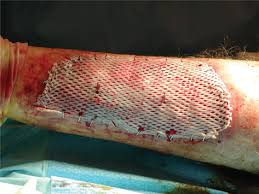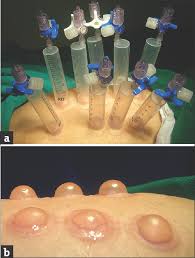
Surgery may be an option for you if light therapy doesn't work. Surgery can also be used with those therapies. The goal of the following techniques is to even out your skin tone by restoring color.
In this procedure, your doctor removes very small sections of your normal, pigmented skin and attaches them to areas that have lost pigment. This procedure is sometimes used if you have small patches of vitiligo. Possible risks include infection, scarring, a cobblestone appearance, spotty color and failure of the area to recolor.

In this procedure, your doctor creates blisters on your pigmented skin, usually with suction. He or she then removes the tops of the blisters and transplants them to an area of discolored skin. Possible risks include scarring, a cobblestone appearance and failure of the area to recolor. And the skin damage caused by suctioning may trigger another patch of vitiligo.

In this technique, your doctor uses a special surgical instrument to implant pigment into your skin. It's most effective in and around the lips in people with darker complexions. Drawbacks include difficulty matching the skin color and potential for the tattooing to trigger another patch of vitiligo.
